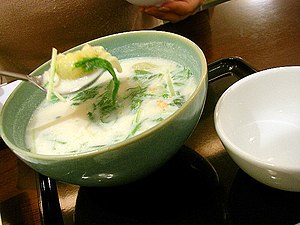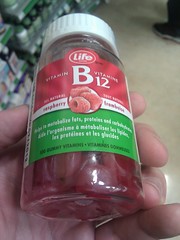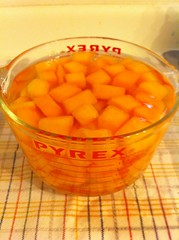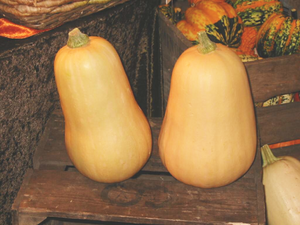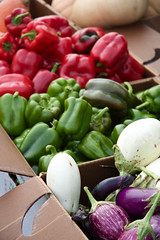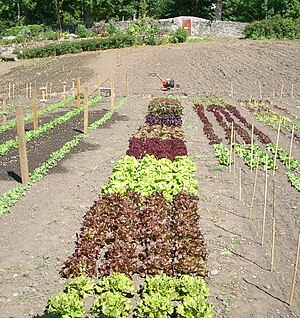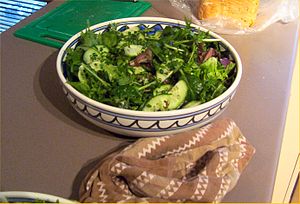There are good reasons to plant a garden in the fall, even though the plants and seeds may take a little longer to germinate in cooler weather. A fall garden provides unique opportunities to taste foods that are fresh, flavorful, and perfect as the growing season starts to come to an end.
(See our Sustainable Gardening blog for more on fall gardening.)
If you missed an early spring planting, you can get a second chance to plant cool weather loving plants. But, what sort of plants will yield a gourmet salad for your table?
What to Plant, What to Plant
Vegetables that like to grow in cooler weather include peas and lettuce, along with root vegetables like carrots, turnips, radishes, and beets. Just look at all the gourmet salad inspiration you have with just those few vegetables in your garden this fall! And don't forget some root vegetables actually produce very delightful salad greens as well as a root crop.
Fall is also the time to consider planting Brussels sprouts, cauliflower, and broccoli. These vegetables work well during the cooler weather when grown from small plants instead of seeds, which solves the shorter growing season. Harvesting these vegetables when they are very young and tender also provides an unexpected gourmet treat.
Lettuce plants thrive in the fall weather, and there are many types of heirloom and leaf lettuces to get you started on a gourmet salad. Choose lettuces like Boston, Bibb, Endive, and Romaine that will still be delicious late into the season. Other interesting greens are possible as well, like arugula, mustard greens, leeks, tender kohlrabi, swiss chard, chicory, and corn salad.
Some of our favorite salad herbs thrive in a cooler garden. You can easily add a gourmet taste to any salad when you add garden fresh herbs like chives, dill, chervil, cilantro, thyme, and a variety of parsley. Once you get all your cool weather gourmet ingredients together, it's time to put your salad together.
Dress Fall Gourmet Garden Salads Lightly
The best way to enjoy the fresh vegetables from your cool weather harvest is in a big gourmet salad. Simple vinaigrette dressings will allow the natural flavors of your vegetables, greens, and herbs to come through. After all, you worked hard on your fall harvest, so shouldn't you taste your efforts first? The dressing should compliment, not compete.
Start with ingredients like olive oil, white wine, red wine, balsamic vinegar, and lemon juice, then combine sweet or tangy ingredients to twist the taste of your dressing to your liking. Then season with a dash of salt and pepper, or a little of those prized herbs you just harvested from your fall garden.
Of course, fall crops of squash and pumpkin work perfectly along with your newly planted fall crops. (And if you've got some late-summer veggies left, even better!) When combining fresh vegetables with the earthy flavors of roasted butternut squash, or pumpkin, for instance, choose a sweet ingredient in your dressing, such as orange juice, maple syrup, or a little honey. Creating a gourmet garden salad in the fall season is all about a mix of flavors that are surprising as well as pleasingly warm and satisfying. You won't get that mix by drowning the salad in heavy dressing. So, keep it light, fresh, and perhaps a bit sweet so all the flavors play nice together!
Finishing Gourmet Touches
To make a fall gourmet garden salad even more interesting, compliment it with fanciful sprouts and crunchy seeds and nuts. Top with sweet or salty pecans, walnuts, almonds, or even a mixed nut combination. Roast the nuts first and put on the salad hot for even more fun. Sprout your own seeds for a real taste surprise. For example, put radish seeds on a damp paper towel and you'll get sprouts that taste like radishes. That's a bit more gourmet than alfalfa sprouts, and it's super easy to do!
Add even more gourmet flair to your garden salad with some smoked fish, sweet sausage, or even some fruit. Pretty slices of red pear or Granny Smith apples adds a lot of impact to a garden salad. And don't forget the cheese! Just about every gourmet salad will benefit when you add a topping of crumbled Bleu cheese, Roquefort, Gorgonzola, or Feta.
When you taste your late season gourmet garden salad created by your own hands, you'll be happy you took the time to plant and nurse your garden along through the cooler weather. Harvesting a garden before the growing season ends can be a challenge. But the pride and pleasure you get from serving salads made with the vegetables from your own garden will make the experience unforgettable.
Be sure to check back later this week for some fall gourmet salad ideas that will make your mouth water!


